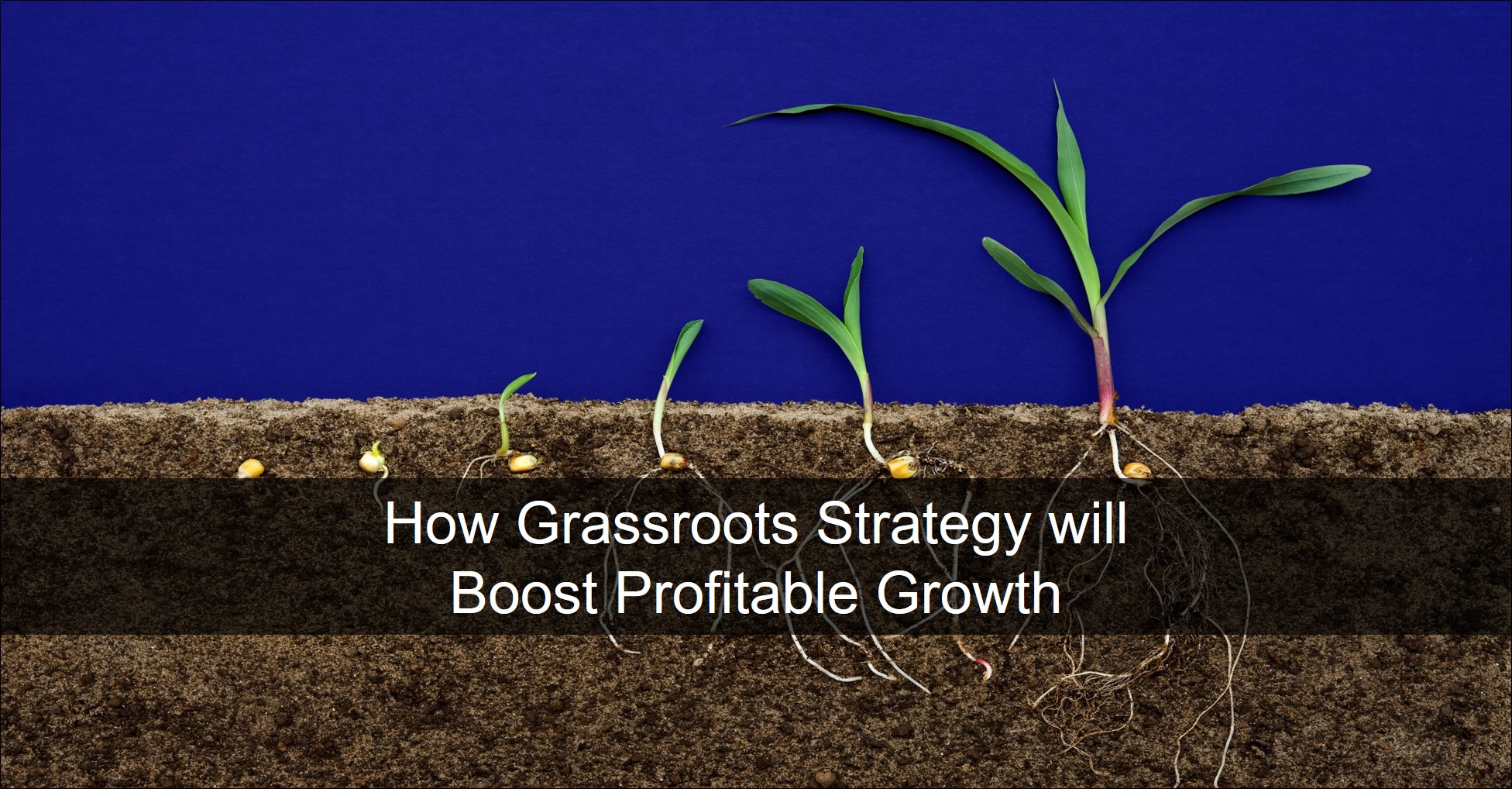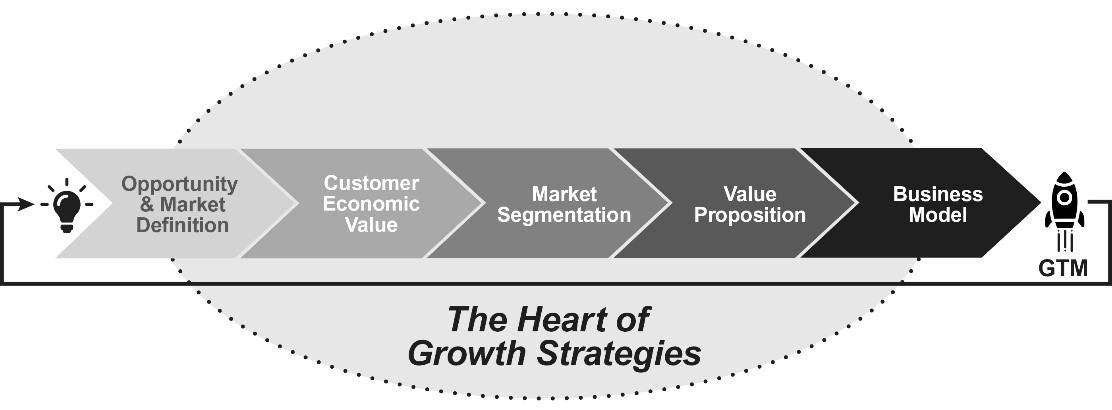
To effectively sell based on value, you need to first grasp the value your offering creates. That is where Grassroots Strategy comes in. Jeff Bennett and I recently published Grassroots Strategy: Cultivating B2B Growth from the Ground Up to share what we’ve learned about building marketing strategies around customer needs and proper pricing strategies.
This blog post explains how Grassroots Strategy and the strategic marketing concepts described in the book relate to ROI Selling and its goal of helping companies boost profitable growth. The book’s examples illustrate how the economic value created by a product or service generates more demand. And as we know at ROI Selling, it is easier to close more deals if you present prospects with a quantified, cost-justified business case.
What is Grassroots Strategy?
Grassroots Strategy is a process and framework that walks you through critical questions that should be answered before launching an offering and setting its price. It has five distinct activities, each of which provides unique insights into your customers, products, and marketplace so you can price appropriately while delivering value to both customers and your business.
Let’s take a quick look at each element of the framework and how it supports the others.

- Opportunity & Market Definition. The process begins by defining the problem(s) you solve for your customers. If you can’t clearly articulate the problem, you can’t possibly know how much a customer should be willing to pay you.
- Customer Economic Value. Once you understand the problem, you can estimate the monetary value created by solving the problem and its ancillary issues. You can also leverage your differentiation to build a more effective marketing strategy.
- Market Segmentation. Not all customers have the same needs. It is essential to identify different customer groups (segments) and articulate the unique value your offering provides based on each segment’s unique needs.
- Value Proposition. Having identified segments of customers that value your offering in a similar way, you can then create value propositions for each segment. This is the foundation of how you communicate with customers and what you deliver to them.
- Business Model. The process ends with a business model that clearly defines how you make, market, and deliver your value proposition and set a pricing structure that captures that value.
When you perform all these steps effectively, you will be on track to maximize the earnings from the offering. This is where ROI Selling and value-based selling tools come in.
Going to Market with Value-Based Selling
Value-based selling is a core part of an effective go-to-market plan and leverages the concepts developed within the Grassroots Strategy framework. Here’s how our value selling tools dovetail into the Grassroots Strategy framework:
- Assessment Tool. It is not always clear from the outset which problems a given customer may have, and therefore which segment they would fall into. An assessment tool helps a prospective customer to self-identify into a segment by determining which problems apply to them and which value proposition would be applicable.
- Value Calculator. Since customer value is unique for each customer, you need to help individual customers estimate the total value that your offering could provide for them. Using a value calculator enables a customer to understand the total economic magnitude of the problem that you can help them solve.
- TCO Tool. Sometimes you may end up in a head-to-head competitive situation. In this situation, use a TCO tool to help the customer understand why your solution will deliver more net value than a competitor.
- ROI Tool. Eventually the customer will need to cost-justify the investment in your solution. Use an ROI tool to show the financial analysis of the investment including the ROI, payback period, and net present value.
Conclusion
To maximize your offering’s lifetime earnings, built your go-to-market strategy using the Grassroots Strategy framework. Then support your sales process with ROI selling tools to close more deals and boost profitable growth.









